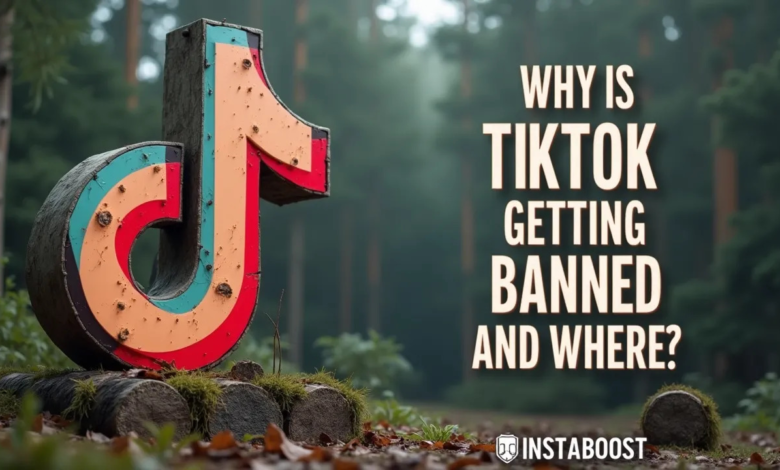Why Is Tiktok Getting Banned And Where?

Why is TikTok banned and where?
Yes, bans and restrictions usually stem from data handling concerns, national security rules, and youth safety debates. Most measures apply to government or official devices, certain public institutions, or specific regions rather than full nationwide blackouts. Coverage is patchy and often time-bound, with policies shifting as legal or regulatory reviews proceed. Expect limited impacts on overall reach, with occasional short-term fluctuations during transitions when compliance and safeguards are clearly defined.
The Ban Debate, Explained in Plain Terms
If you’ve heard that TikTok is “getting banned,” what’s really happening is a patchwork of rules tied to two main concerns: data routing and youth safeguards. Lawmakers in the U.S., Canada, the EU, India, and parts of Australia are advancing restrictions that range from government‑device bans to broader jurisdiction limits, often focused on where data flows, who can access it, and how the app manages addictive design for minors. This isn’t a single global blackout. It’s a shifting map of policies with carve‑outs, appeals, and compliance timelines. For users and brands, the practical question is fit, not panic.
Where can you still operate, and what guardrails keep you compliant and effective? If TikTok is available in your market, it still works when you pair creator collaborations with real comments, retention signals, and clean analytics, and when you test targeted promotion with qualified partners instead of chasing vanity spikes. If your region faces a partial or time‑bound restriction, you can protect momentum by building a portable audience via email or SMS while mirroring your best‑performing hooks to Shorts and Reels so completion rates and watch time carry over. The smart path is to treat bans like weather systems and plan for patches, not forever.
Track the “where” through official notices, read the data‑handling clauses that drive most decisions, and keep a simple testing loop so you can reallocate the budget the week policies shift. Done this way, even a regional ban becomes a rebalancing exercise, not a cliff, especially if you measure outcomes beyond raw impressions and keep your creative and reporting stack platform‑agnostic, and consider a lightweight TikTok branding upgrade as part of your toolkit.
Who’s Making the Rules, and What Counts as Proof
Nothing changed except one sentence. Policymakers aren’t moving on vibes – they’re moving on documents, audits, and the paths packets of data actually take. That’s why the “TikTok getting banned” story splits by country. U.S. federal agencies and dozens of states restrict the app on government devices. Canada and the EU apply similar public‑sector limits and test compliance under GDPR and the Digital Services Act. India imposed a nationwide prohibition citing sovereignty and data security.
Parts of Australia mirror government‑device bans while studying broader scope. What pushes a jurisdiction from caution to restriction is usually a mix of data‑routing exposure, whether a foreign parent can be compelled by home‑country law, and evidence of youth‑safety gaps like weak age gating or addictive design patterns. For brands and creators, this reads less like a stop sign and more like a map. Keep building if you match activity to the rule set – separate device policies for public‑sector contractors, enable platform‑level youth safeguards, and keep clean analytics that show compliant audiences and healthy retention signals. If paid promotion is part of your plan, use reputable partners and test impact region by region.
Real comments and creator collabs in allowed markets tend to beat spray‑and‑pray impressions. When restrictions tighten, treat it as a timing pivot. Build owned channels, diversify short‑form placements, and document data flows so you can pass procurement checks. The non‑obvious bit is that enforcement often moves slower than headlines, which creates short windows where targeted promotion plus strong completion rates can win share before new compliance deadlines hit – especially if your measurement stack flags jurisdiction and age eligibility clearly.
See also: How Liveness Detection Technology is Reshaping Digital Security
Operational Plays When Policy Shifts
It’s not the tool. It’s how you use it. Treat “TikTok getting banned” headlines as a prompt to diversify and harden your stack, not to abandon momentum. Start by mapping risk tiers. If your audience leans into government or regulated sectors in the U.S., Canada, the EU, or Australia, expect government‑device bans to trim reach at the margins. If you market into India, you’re in replacement mode.
A twin‑track content plan works best: publish native shorts on TikTok and mirror cuts on Reels, YouTube Shorts, and Snap so you keep creative velocity while insulating distribution. Pair that with clean analytics. UTMs, server‑side events, and first‑party email capture from in‑video lead magnets give you continuity regardless of jurisdiction limits.
Ads remain a lever when they’re reputable and matched to intent. Run targeted promotion only where you can verify data routing and retention signals like watch time, completion, and comments through compliant dashboards. For youth‑skewing brands, layer safeguards – age gates, scheduling, and creator collabs with transparent disclosures – so you align with youth safety rules while keeping trust high.
If you rely on creators, hedge by contracting usage rights to repurpose posts across platforms and by testing 3 – 5 variations to find early momentum before you scale spend. The non‑obvious edge is to audit your content taxonomy for policy‑resilient topics. Education, how‑tos, and community updates tend to survive algorithm jitters and travel cleanly across regions. Finally, build a weekly testing loop. Put 10% of the budget on exploratory placements, 20% on cross‑posting experiments, and 70% on proven units. This way, whether restrictions tighten or relax on a compliance timeline, you’re measuring lift, not guessing – and your brand stays findable when people search “where is TikTok banned and why.”
The Case Against Fatalism
You can polish failure, but it won’t shine. What you can do is stop confusing policy headlines with market demand. The “TikTok getting banned” storyline is louder than the real commercial risk for most brands. Government-device bans limit institutional reach, not your core consumer. The pushback that matters is simple: TikTok is still a high-intent discovery engine, and completion rate, saves, and real comments forecast conversions better than raw impressions.
If you’re worried about future restrictions, build a hedge, not hysteria. Mirror your best‑performing hooks into Reels and Shorts, map creators to audience segments you can retarget elsewhere, and keep analytics clean so you can pivot without losing signal. Paid promotion works when it’s matched to intent and measured against retention signals, not vanity views.
If you buy traffic, pick reputable partners and keep your testing loop tight. In markets like India where replacement is the rule, point the same creative system at YouTube Shorts plus regional apps, and keep creators in the loop with contracts that preserve usage rights. In the U.S., Canada, the EU, and Australia, plan for patchy, time‑bound measures.
You may see a small dip in campus or public‑sector reach, but your consumer funnel still runs on creators, comments, and watch‑through. The non‑obvious play is to use TikTok as your cheapest rapid‑learning lab. Prove the concept there, then scale winners cross‑platform so any ban is an inconvenience, not a cliff. That’s how you turn regulatory noise into a portability strategy and keep revenue compounding while others pause.





